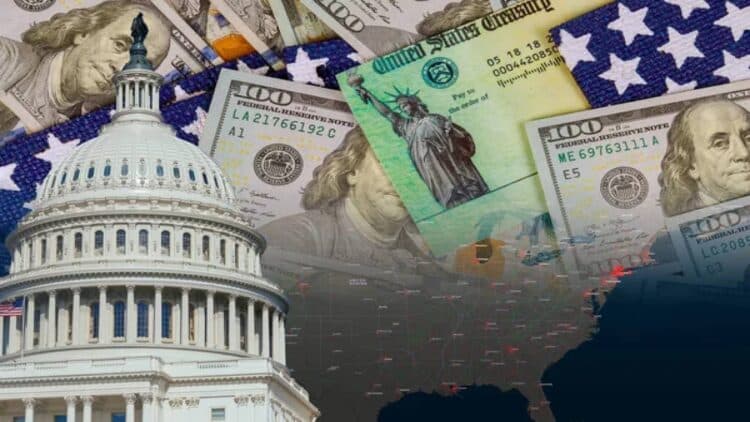For weeks, rumors have been circulating about a $5,000 stimulus payment from the new Department of Government Efficiency (DOGE). These rumors have been generating excitement and hope among citizens at the prospect of a stimulus payment of such a large quantity to be distributed right off the back of the most recent tax season. However, these claims are being quickly shut down by outlets such as MSNBC, clarifying that no such payment has actually been confirmed by the Oval Office.
Where did the $5,000 stimulus payment rumor come from?
Rumors of the $5,000 stimulus payment first started appearing when James Fishback, CEO of of investment firm Azoria, made comments about a dream he experienced whereby the presidency would send citizens cheques in order to share in the savings generated by DOGE. The idea was then later posted on social media platform X by Fishback, which head of DOGE Elon Musk responded to.
“We fleshed this thing out in about two and a half hours,” Fishback said to NBC News in February. “We sent it to [White House chief of staff] Susie [Wiles], sent it to some folks in the admin, sent it to some folks at Treasury, and here we are a day or so later, with it being shared with President Trump from Elon. And so it’s exciting.”
Fishback continued to describe how the payments would be distributed to tax-paying households who earn above a certain income level to eliminate concerns over what such a stimulus payment would do for inflation:
“The DOGE Dividend is different from past stimulus checks (e.g. 2021 American Rescue Plan) because only tax-paying households receive it,” he describes. “Tax-paying households are more likely to save (not spend) a transfer payment like the DOGE Dividend as consumption is a lower share of their income. … There is nothing inflationary about paying off debt, saving for emergencies, or investing in college or retirement. In fact, debt paydowns are actually deflationary.”
How was the $5,000 conceptualized?
The figure of a $5,000 check came from Fishback’s original calculations, assuming that DOGE would reach its original targeted savings goal of $2 trillion. Following this, Fishback proposed that 20% of these savings be distributed to the 79 million Americans who pay income tax. This calculation subsequently resulted in a figure of $5,000 for those tax paying households which are net-income tax payers.
However, DOGE has since revised their original federal spending savings goal from $2 trillion to $150 billion. Further, while DOGE claims to have already saved $165 billion, the reality is that the data suggests the department has only saved $15 billion, primarily through budget cuts of initiatives such as USAID and Medicaid and retrenchment, like the reduction in the Social Security Administration (SSA) employees from 57,000 to 50,000.
Bad news for the $5,000 payment: Experts weigh in
Even if DOGE reaches its new savings goal of $165 billion, experts have cautioned that such a stimulus payment would be counter-productive to the original intentions of DOGE, which is to maximize unnecessary government spending:
“We have to actually figure out if any money is saved at all before promising people checks in the mail,” said Mark Zandi, the chief economist at Moody’s Analytics, adding: “I thought this was about taking a crack at reducing our deficit.”
Further, there has been no confirmation that the White House plans to act on these plans, despite both Musk and President Trump indicating on social media platforms that they approve of the idea. Even if the idea was approved by Congress to go ahead, DOGE still needs to actually achieve its savings goal first in order for the payments to be distributed. Additionally, with the new savings goal, these payments would be reduced to approximately $1,000 per household, assuming the original 20% index would be applied. It’s a time of “wait and see” at the moment.


